|

By Ian Cushway, 24th August 2020
TR6 Buyer's Guide
Now's the time to grab a TR6 gem while you still can!
It's the ultimate beefy but affordable British classic – and one you can tweak to make even better. It's just a case of getting a good one in the first place...
We love the blunt, no-nonsense squared-off styling of the TR6 – and we're not alone, judging by the recent hike in values of this typically British Triumph. But the good news is they're still affordable – just – and significantly less than the TR5 upon which much of it's based.
What's more, you'll love the way it drives. There's plenty of urge underfoot from that resonating straight-six and moving swiftly through the gears will reward you with a 0-60mph time that’s more or less within hot-hatch territory. You'll fall for the traditional seat-of-the pants way it handles, too. It's firm, sure-footed and the brakes are adequate if they’ve been well maintained.
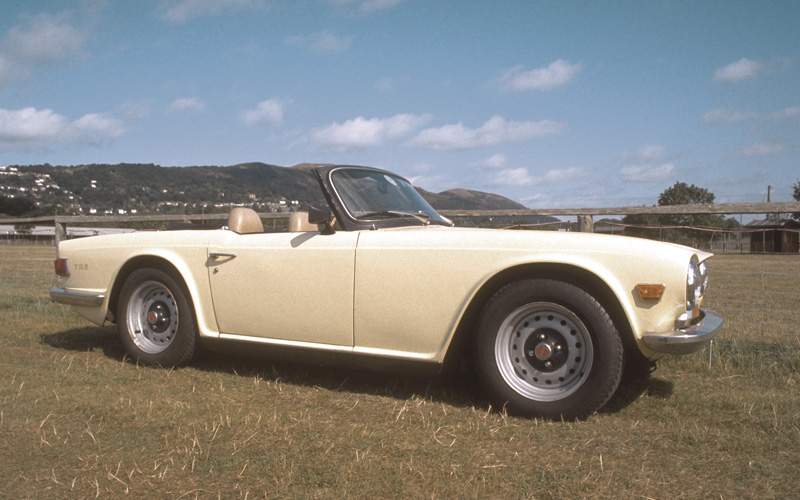
Credit: Photo by Moss Europe Ltd
In total, 91,850 were made of which the vast majority – some 78,142 – were exported across the pond with just 8,370 remaining here. Understandably, given our harsh winters and the TR6's propensity to rust, lots of US examples have been loaded into containers and bought back home. The US cars were originally fitted with twin carbs instead of fuel injection and often make the best buys.
Talking of which, when it comes to viewing cars for sale, bear in mind most will have been restored already, once, or several times even over a period of years. That means it will be a case of seeing what's been done, by whom – and whether they've made a decent fist of things.
To that end, here's an outline of what to look for so you can make your own mind up.
Body beautiful?
So, starting with the most important bit first – the body. Put this on the top of your agenda when looking at a potential purchase, as you can easily spend a couple of grand on what might look like superficial repairs.
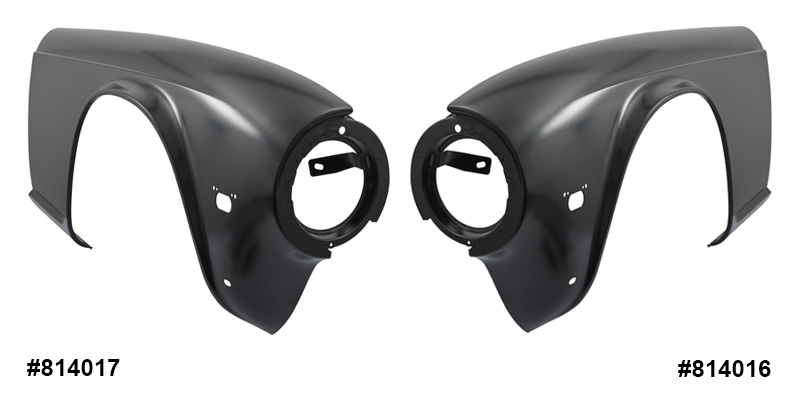
Credit: Photo by Moss Europe Ltd
On your hunt for rust, start at the front and peer up behind the headlight bowls and around the seams on the scuttle top where the wings bolt on – these are all prime areas for mud collection and if left, the metal will rot out causing rust bubbles on the outer surface. Our replacement left hand front wing and right hand front wing are available, but because they go on the bottom of the sill, chances are you'll find more rot when you take them off. Rear wings are prone to rust where they bolt on to the rear deck panel, at the back corner above the light and behind the door where the flange of the wing welds to the body. If someone tells you the bead of rust here is just on the surface, don't believe them! The rear valance also rots out if water is allowed to collect between it and the closing panel, and being hidden by the bumper, this can easily go unnoticed.
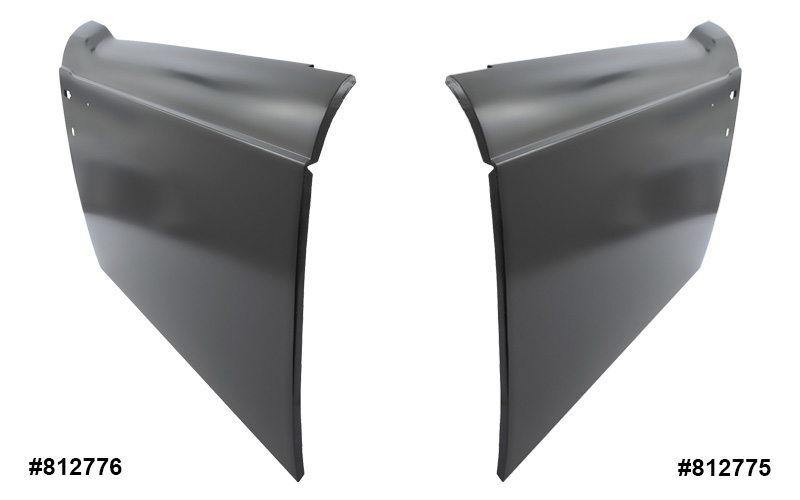
Credit: Photo by Moss Europe Ltd
The double-skinned leading edge of the bonnet also rots, as can door bottoms, usually due to blocked drain holes in the bottom. Our replacement left hand door skin and right hand door skin are also available. Sills are also a notorious area for rust, particularly around the A-posts. Replacement requires removal of both front and rear wings, which usually uncovers more issues. Bulkheads are vulnerable to front road wheel rash too, which can result in the inner wing splash panel rotting out. Also, the battery tray can disintegrate if battery acid is allowed to get the best of it.
Totally floored
The upright section of the floorpan behind the sills is another common problem area – chances are a repair section will already have been let in here – but if not, it’s easily done as long as there’s sound metal in close by.
The chassis is also prone to rust, with the worst areas being where the trailing arms mount. Get it done if you’re in any doubt, as torque from the wheels can rip the arms off with dire consequences. The chassis rails, floorpan and ‘breastplate’ for the ‘T’ section should also be looked at and any rust should be tackled before it’s allowed to get any worse. Look for any buckles as a result of severe collision damage while you’re at it. Another area often overlooked is where the diff bolts to the rear chassis cross members – you’ll notice a ‘clunk’ on acceleration if there’s a problem.
Other parts of the chassis will be protected by engine oil, most Triumphs leak to some extent. The rear lip of the boot can also corrode; the overhang, closeness to the tailpipe exhaust gases and its double-skinned nature being at the root of the problems. Chances are water will have made its way into the boot at some point, so check the spare wheel to make sure there are no puddles. Still at the rear, the metal around the taillights is another vulnerable area.
The good news is we stock a full range of body & chassis parts & accessories for the TR6.
Six of the best?
Potential TR6 buyers can be reassured by the prospect of strong, relatively simple mechanicals. That said, crankshaft end float can be an issue. You can detect it by pushing the crankshaft pulley rearward as far as it will go then get someone to press the clutch (without the engine running). You’ll feel the pulley move, and this can reveal the condition of the thrust washers. If it’s excessive (anything more than 15 thou) then they could be about to fall out with disastrous results.
If you’re lucky you can drop the sump and simply replace the thrust washers. Otherwise it will be a case of machining the bearing cap (it can be modified to accept the thrust washer to prevent the same thing happening again) and in the worst case scenario you will have to replace the block and crankshaft as well (although there’s fixes to reshim the block to avoid having to replace it).
There are often oil leaks from the cylinder head gasket on the left hand side by the metering unit. Oil pressure is always a good indicator of general engine health; if a warm engine’s reading 10psi at 3000rpm, then start to worry as it should be nearer 75-80psi at these revs. A warm engine should be relatively quiet too, so be wary of one that’s making too much noise. Replacement engines are hard to come by so we offer a reconditioning service to your own unit.
Rough or erratic running is often down to a lack of upkeep on the fuel injection system, start by checking the butterflies are synchronized correctly and the operating spindles and linkage are all in good order and correctly set up. The original Lucas fuel pump sits in the boot and is prone to vaporisation on hot days, in good condition they work well but age is not on their side. Most cars will have been changed to a Bosch type pump such as our Bosch type conversion kit and most importantly check the fuel pressure is correct through the rev range, if in doubt change the Pressure Relief Valve.
The metering units are generally reliable but also suffer with age related issues, bad running can be attributed to a split diaphragm in the metering unit which causes havoc with the fuel metering, injectors often suffer from air locks particularly on start-up most PI owners will be familiar with this one, and occasionally injector numbers 2 & 5 will become blocked with fragments of O rings from the banjo bolts. If in doubt have the PI system professionally dealt with, it will be money well spent. View our range of fuel injection parts & accessories.
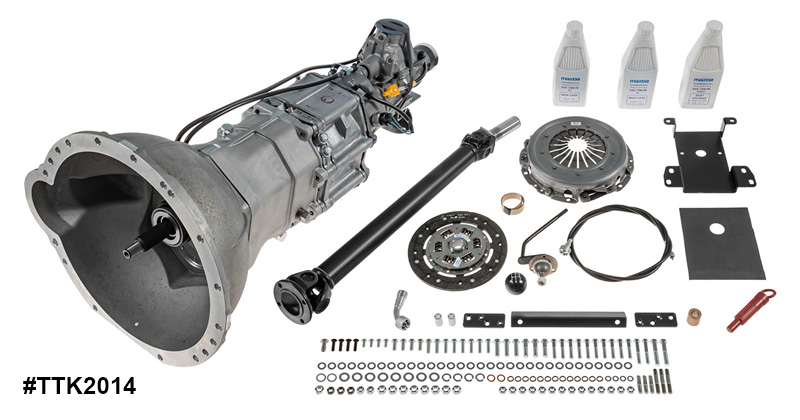
Credit: Photo by Moss Europe Ltd
Transmission vamp
TR6 clutches can feel a little heavy, but general gearbox operation should be relatively smooth and quiet. If not, suspect a worn layshaft. It’s worth keeping a keen eye on transmission fluid levels, a lazy overdrive change being a good indicator that a leak has depleted the level.
Synchro is usually ok but jumping out of gear on the overrun isn’t uncommon and the only remedy will be a replacement box. Fitting a more modern five-speed Mazda gearbox conversion is a safe bet for added reliability and increased drivability.
There were two types of overdrive – it was an option when new and highly desirable now, transforming the car into a better long-distance cruiser and improving fuel economy. The ‘A’ type (which operated on second, third and fourth) ran until ‘73 after which it was superceded by the ‘J’ type which ran on just third and fourth. Both are robust, but arguably the former has a harder life. Getting your own unit reconditioned is still a viable option.
Keep in trim
The Triumph’s cabin is sparse with wood, black vinyl and lots of rattly bits, although it has to be said the driving position is perfect with plenty of legroom. Incidentally, that Karmann restyle did have a major impact on the TR’s viability as a weekend plaything – the boot space is cavernous compared to its predecessors.
Wood facias can become weather beaten, but if you look at our range of interior parts & accessories you'll see there’s nothing that can’t be replaced – so don’t worry.
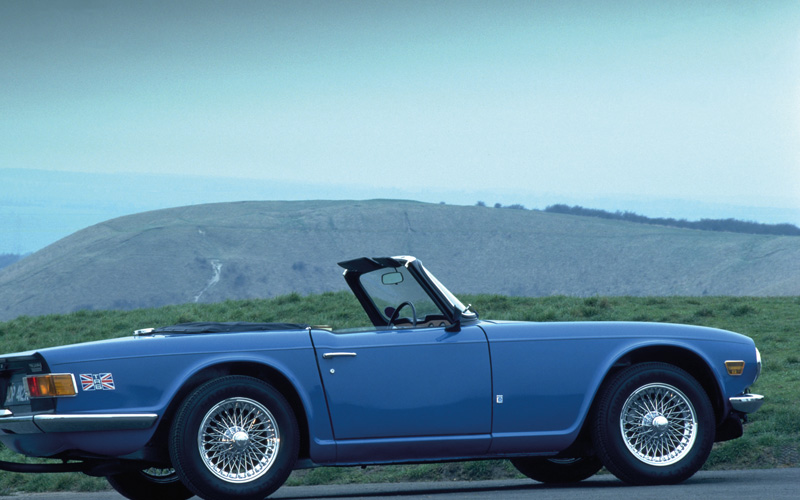
Credit: Photo by Moss Europe Ltd
What to pay?
TR6 prices have soared, due to the knock-on effect of upward spiraling TR5 values. That’s not to say you can’t still get a good one – it’s just that you’ll pay a lot more for it than you would have done 10 years ago!
Basket cases are thin on the ground, so realistically the least you will pay is £10,000 for a runner needing work. Spending £14,000-£15,000 will buy something a lot more respectable, while most RHD UK cars usually now fetch between £18,000-£20,000. The best restored cars will hit the buffers at £25,000.
Because everyone prefers the 150bhp PI, often the post-’73 cars and carb’d US models with a little less power offer better value.
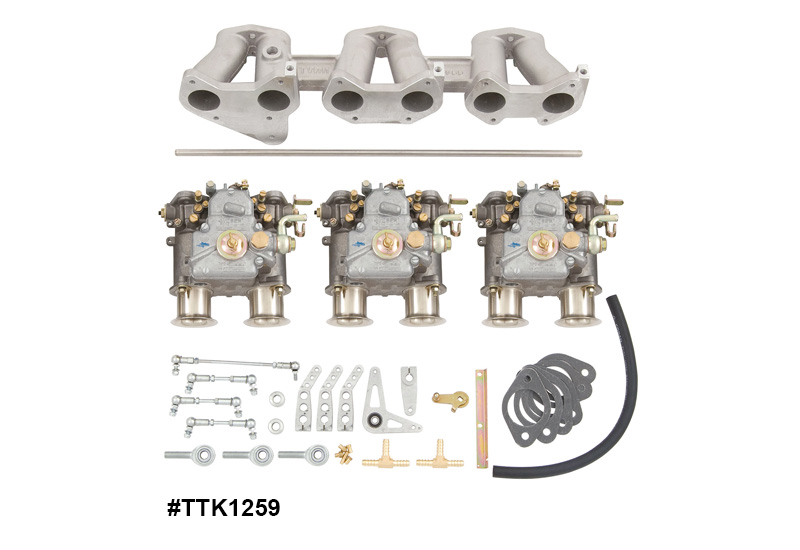
Credit: Photo by Moss Europe Ltd
With the passing of time, the difference in performance is hardly noticeable anyway, especially if you invest in a set of our triple Webers.
We've seen really solid 'survivor' cars from the US advertised for as little as £12,995. Hmm, very tempting...

Keep up with all the latest from Moss on our social pages
|
|





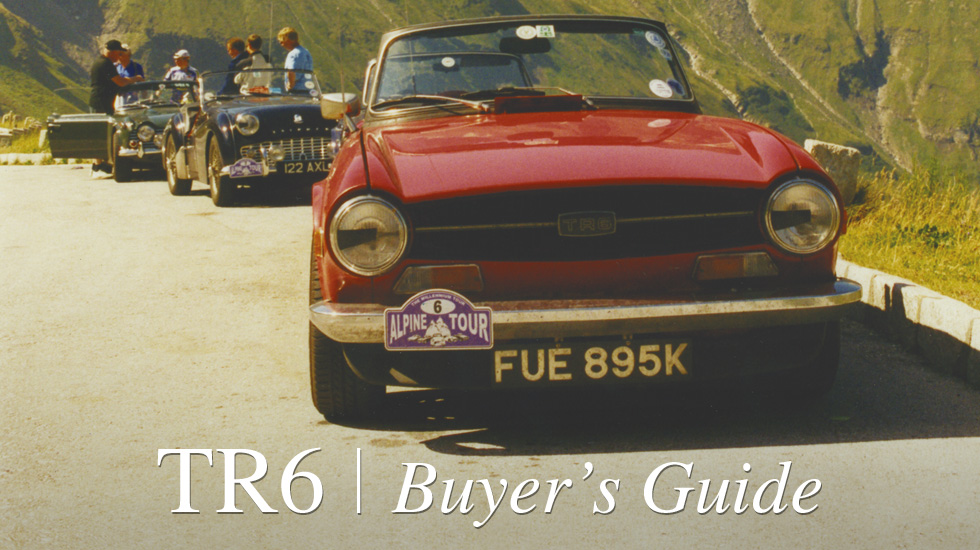








